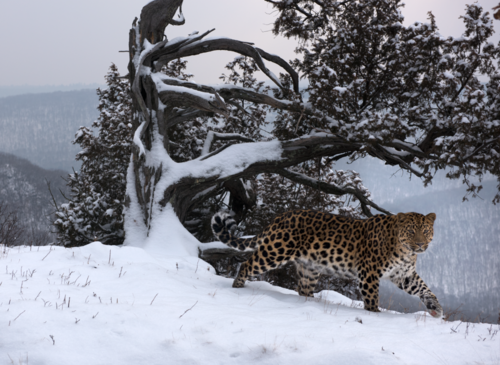If “International Day of Forests” rings a bell, this might be because ever since this special day to celebrate forests was designated in 2012, the UNECE/FAO Forestry and Timber section has been working hard to bring forests closer to you. Remember a cave made of paper which we brought to the Palais des Nations to show you some innovative wood-based products that will make our lives more beautiful (and sustainable!) in the future? Or a tasty breakfast made from forest products we hosted in 2019? Or the fashion show featuring clothes made from wood-based textiles, or a workshop where you could create your own forest ecosystem in a jar? These varied celebrations of the International Day of Forests remind us all there is much more to forests than simply trees, and that sometimes you have to look beyond trees in order to see the forest.
This year’s theme of the International Day of Forests, forests and biodiversity, gives us the opportunity to reflect on the extent to which all our everyday lives are impacted by forests.
Biodiversity can be defined as an interdependent plethora of life forms
Biodiversity can be defined as the plethora of life forms found on earth ranging from genes, micro-organisms, plants and animals to entire ecosystems. Forests are home to approximately 80 per cent of all life on land, thus constituting a hub of biodiversity. The different elements in this biodiversity system co-exist in a complex web of direct and indirect interdependencies that ultimately spans our planet. This interdependency can take different forms. In forests, trees exchange energy and information with each other. We can also observe circular interspecies connections. In a symbiotic relationship, fungi make nutrients better accessible to trees, while trees give fungi access to water. Trees and shrubs also offer food and shelter to animals. In turn, carnivore predators control herbivore populations that may otherwise threaten ecosystem stability by damaging forests, which ultimately again support fungi.
We as humans are also part of this interconnected web.
The air we breathe, the water we drink, and the energy we consume; all originates from the processes controlled by trees and other plants. Without forests and the many services they provide, life as we know it would not exist.
In order to safeguard these important ecosystem functions and preserve and enhance the economic, social and environmental values of all types of forests for generations to come, the UNECE/FAO Forestry and Timber Section works with its Member States to strengthen sustainable management of forests and the contribution of forests and forest products to sustainable development in the ECE region.
Managing forests sustainably, and restoring them when needed, is crucial for people, biodiversity and the climate. We do so by strengthening capacities, collecting data, facilitating policy dialogue and communicating the important role of forests in contributing to the achievement of a wide range of Sustainable Development Goals. And we all reap the fruits of this labour: integrated forest management with biodiversity maintenance has expanded in the UNECE region, and the area of forests protected for biodiversity purposes in the UNECE region has increased by 12% between 1995 and 2015.
We should not forget however that we are still experiencing a loss of biodiversity on an unprecedented global scale. While we should do everything we can to conserve and increase biodiversity, we should also not underestimate nature’s resilience and adaptability. There is evidence that some negative trends can be halted or reversed.
Some truly incredible stories exist that serve to remind us of the sheer power of nature in the face of adversity.
For instance, the Siberian tiger population fell as low as 40 in the 1940s. Thanks to restoration and conservation efforts, the number has risen to 540 Siberian tigers living in the wilderness in Russia today; a country that is home to 95 per cent of the species’ global population.
In other instances, nature has sometimes found innovative solutions to the most challenging conditions and threats. For example, elks have developed a portable air conditioning system to withstand the summer heat. In summer, their large spade-shaped horns are covered with a thin layer of skin. When it is hot, blood flows through the skin around the horns and then gradually circulates back into the animal’s head to cool it. Once temperatures cool down in autumn, the skin comes off and elks rub their horns against trees to accelerate this process.
Even more ingenious, the fieldfare, part of the thrush family, defends itself from hostile birds by dowsing their enemies with bird droppings. These droppings glue the other birds’ feathers together, which makes it more difficult for them to fly and attack.
All these ingenious species that inhabit and rely on interconnected forest ecosystems show us that forest biodiversity is too precious to lose and definitely worth celebrating. So, come and celebrate with us – visit http://www.unece.org/forests/idf2020 to find out about exciting events we have lined up for you this year.



